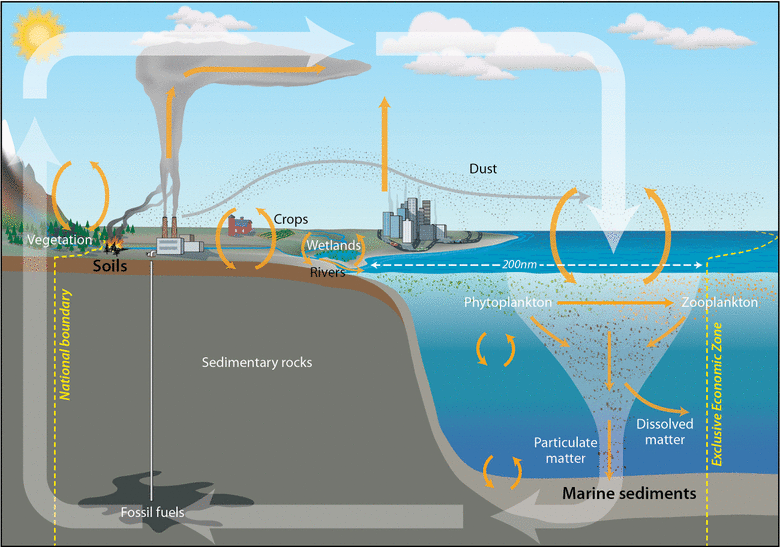
Until now, research in the context of greenhouse gas reporting on a nation-by-nation basis has focused on carbon stored on land (e.g. in plant biomass and soils) and in the atmosphere, as well as on how human activities impact these carbon stocks. However, the ocean and underlying sediments store substantial quantities of carbon and are also subject to human influences. Organic carbon stocks in marine sediments within EEZs have been overlooked.
In the context of ongoing climate change and global treaties aimed at mitigating climate change, a more complete assessment of national carbon stocks is of significant environmental, economic and political importance. Despite the integral role of the oceans in the global carbon cycle and their vulnerability to climate change, current ways of assessing carbon stocks do not consider human activities in the marine realm.

In this study, the terrestrial and marine realms, i.e. land and ocean carbon stocks, are compared and contrasted in case studies on three countries – Namibia, Pakistan and the United Kingdom. Results show that marine sediment carbon stocks in the EEZs of these countries may be equal in size or even exceed land stocks. This provides motivation for reevaluation of how national carbon stocks of maritime countries are assessed and valued.
This study provides grounds for a shift in national greenhouse gas reporting. It highlights the importance of considering and safeguarding carbon stocks on land, as well as carbon stocks “hidden” beneath the ocean surface which may be both substantial in size and vulnerable to human interference. Overall, there is a clear need for improved assessments of carbon stored in marine sediments, with potential implications for the management of human activities on coastal environments.
Comments